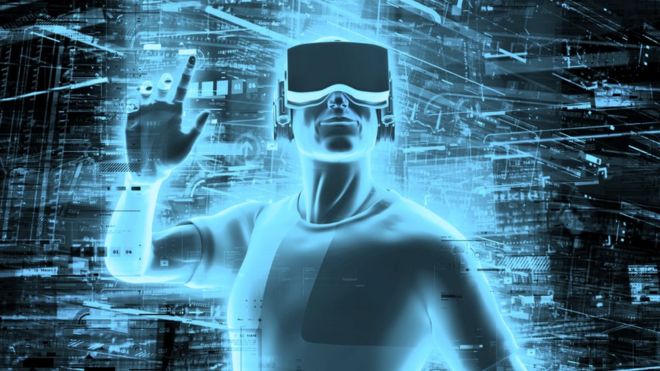Think of virtual reality and you will probably conjure up images of fantastical landscapes in a game or film set.
But VR can also be embedded in reality to give people more understanding of the world around them.
Increasingly it is being used as a tool by journalists, teachers, healthcare workers and retailers.
The BBC took a look at a few of the more unexpected uses of the technology.
Surveys suggest that while 99% of people have heard of autism, only 16% really understand what it means. In the UK, more than a quarter of autistic people have been asked to leave a public place, such as a restaurant.
In order to address this, the UK’s National Autistic Society made a VR film this summer to show people what it was like to live with the condition.
The film takes viewers on a journey with a young, autistic boy as he walks around a shopping centre. They can experience the sensory overload he experiences as he walks around.
Mark Lever, chief executive of the National Autistic Society, says he hopes the film will “help the public understand a little more about autism”.
The film, along with Samsung Gear headsets, was taken on tour around UK shopping centres this summer and the charity is also putting together a pack for schools to teach their students about autism.
The film is available via an app.
Alzheimer’s Research UK also released a VR film this summer, intended to put the public in the shoes of someone with dementia.
A Walk Through Dementia aimed to show how everyday tasks such as making a cup of tea can be a challenge for someone with the condition.
VR operation
Healthcare has become one of the big adopters of VR – using it both as teaching aid and to treat phobias.
Surgeon Dr Shafi Ahmed became one of the first to offer a live virtual surgery experience in April 2016 at the Royal London hospital.
Some 5,000 people in 14 countries tuned in to watch the operation to remove a tumour.
Now the start-up he co-founded, Medical Realities, is launching Virtual Surgeon as a product, hoping that such surgery can reduce the cost of training doctors, reach a much wider audience and ultimately “democratise medicine”.
Meanwhile, in the US, VR has been used to help soldiers deal with post-traumatic stress disorder and for arachnophobics to overcome their fear of spiders.
In one study, 23 people were encouraged to approach a virtual spider and by the end of the experiment, 83% showed significant improvement in how they could tolerate the situation.

